Out now on Blackford Hill, Tommy Perman’s ‘The Resonant Viaduct’ is an ambient work commissioned by the National Trust as a site-specific installation for Manchester’s Castlefield Viaduct — built in 1892, inaccessible for decades, and now being transformed into a public space for urban nature. Read Rob St. John’s essay, which accompanies the release, below.
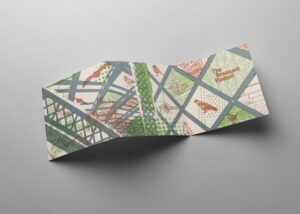
Rhythm and movement have defined the landscape of Castlefield, an area of Manchester just south of the city centre, for centuries. The area’s name derives from the Roman fort established around 79AD, which acted as an important stopping-off site on the road between the major settlements of Chester and York. Long after the fort’s timber remains had decayed into the earth, Castlefield grew rapidly from the 18th Century onwards during the Industrial Revolution. Construction of the Bridgewater Canal – the first completely artificial canal of the industrial age – in 1763 allowed trade to reach the heart of the city on a network of waterways. Over the next century, an explosion of railway construction criss-crossed the landscape in tracks and bridges. This boom in construction included, in 1892, the Castlefield Viaduct which linked the (long-defunct) Central Station with the Port of Manchester (now Salford Quays).
Over 130 years later I’m stood on the viaduct, overlooking the city. The lines of trade and industry etched into Castlefield’s landscape unfurl below me, a tangle of metal, water and stone punctuated by the green space on the site of the Roman fort, which was partially reconstructed in the 1980s. Whilst the viaduct was left derelict in 1969 after Central Station was taken out of use, trains and trams still run over lines strung either side of it, high above the streets below. On a muggy early-autumn day the viaduct is rich with life and movement again. Flower beds and weathered steel planters line its edges, whilst wild flowers and trees thread through its trellis-like latticed sides. And in the middle of this resurgent strip of green across the city skyline are washes of ambient sound. People sit around on benches below the canopy of fledgling trees as traces of local industry and biodiversity are refracted back out in gently ebbing tones. This new abstraction of the industrial north is part of ‘The Resonant Viaduct’ by Tommy Perman.
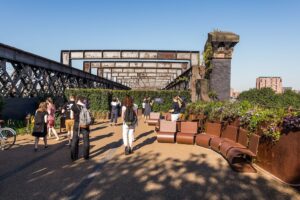
The piece was commissioned in 2022 as part of the National Trust’s project to reimagine the Castlefield viaduct as a new public urban green space. Residents of Manchester have a significant lack of green spaces in the city centre. This is important for two reasons. First, it limits the opportunities people have for engagements with nature – increasingly recognised as vital for mental health and a sense of environmental care and responsibility – in their everyday lives. Second, it hinders the natural resilience of the city’s environment to cope with growing threats of flooding, drought and biodiversity loss brought on by the deepening climate emergency. In this context, in July 2022, the National Trust reopened the Castlefield viaduct as part of a pilot project aiming to repurpose the structure as a temporary urban park. Working with local projects – including community agriculture and gardening groups – the Trust have created a new space for people to engage with the city’s history and the upwellings of urban nature emerging through its cracks.
Composed in the same spirit, ’The Resonant Viaduct’ was installed on the viaduct upon its reopening. Tommy’s piece draws on the physical characteristics of the viaduct to shape the contours of an ambitious and beautiful piece of modern classical composition. The full piece maps the course of the 330 metre long viaduct, reimagining its structure as a visual score. The viaduct’s cast iron supports sound as sub bass rumbles, whilst its latticework sides map intersecting arpeggio patterns, and the flutter of a butterfly’s wings through self-willed blooms of wild flowers becomes a skittering drum. Close listening to field recordings made at the site revealed that tram horns echoing from surrounding streets play in D Major, the same scale as the buzzing drone of a hive of worker bees – the emblem of Manchester’s industrial urban heritage. Recordings of the viaduct’s rumbles and resonances made by Raz Ullah are combined with those by Manchester musicians Pete Philipson (guitar), Nancy Elizabeth (voice) and Danny Norbury (cello).
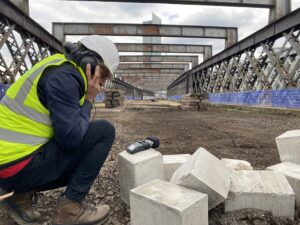
Raz Ullah recording the sounds of the viaduct, © Cheyenne Brown
The ‘Resonant Viaduct’ can be listened to on a – very slow – walk along the viaduct, where the act of walking becomes not only an interaction with the sound piece, but a deeper engagement with the layers of urban history that thread around the structure. In Tommy’s composition, the viaduct becomes an instrument which sounds through movement: the boom of cast-iron support drums, the geometric melodies following criss-cross girders, a high chord sounding with every overhead metal girder support. Tram horns are reworked as ambient synthesisers; moth wing beats as sub bass rumbles (a nod, perhaps, to the raves held on the derelict viaduct in the 1980s). As ever in Tommy’s work, the heft of his conceptual imagination is held lightly in the piece, but it richly rewards the curious listener seeking to place his abstracted sonic palette.
The contemporary viaduct is split into three sections. On entering from Deansgate-Castlefield tram stop, you walk through a ‘green screen’ partition of climbing plants to enter the first section of path. Designed to evoke the history of the structure, this section is lined with borders of rubble where rosebay willowherb, buddleia, sedges, wild flowers and strawberries grow. This section has been left to self-seed, with its resulting urban botanics carried in on the wind, or by birds. Sparse, wordless vocals and cello wash over the metallic minimalism of the corresponding first movement of ‘The Resonant Viaduct’, titled ‘Six Million Rivets’. Here, repeating patterns clack like steel on train tracks, echoing into resonant harmonies and ghost notes. Around three minutes into the piece the focus dips from high above the city to under the waterline of the Bridgewater Canal below. This brief submergence of sound is interrupted by the clatter of a passing train and the incidental harmonies of the droning tram-line.
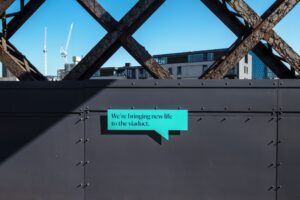
The second section of the viaduct is focused on recasting the viaduct as a space for lively urban nature. Here, planters are filled with flowers, vegetables and trees by community groups, lending a new vibrancy to the rusting patina of the viaduct’s steel supports. Time bows and bends through the granular loops of ‘The Resonant Viaduct’s’ corresponding second movement ‘Lament for the Forgotten’, an elegy for the local communities of men and women who built and supported the viaduct’s construction, but whose voices are largely lost in its historical telling. The viaduct is frequently described as a major feat of Industrial Revolution engineering – built by the engineers who designed Blackpool Tower and constructed from carbon steel only a few years after the Forth Rail Bridge – but there is little in the way of the structure’s counter-histories. As Tommy says: “It occurred to me that we know the stories of the successful, rich and powerful men whose work is celebrated but where are the stories of the women? I want to acknowledge this, however gently.” Like the National Trust’s reimagining of the viaduct’s built environment, the piece invites reflection on how the patterns and politics of Castlefield’s urban space have been shaped, and how we might envision them with optimism and care for the future.
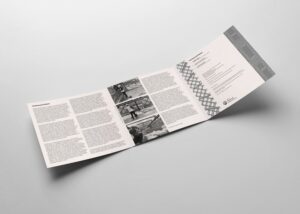
The echo-located clicks of bat calls and trilling bird calls sound out the viaduct spaces in ’The Verdant Viaduct’, the piece’s final movement, over the slow motion ebb of synthesised strings and digital glitches. The movement marks the end of the walk, terminating in a small enclosure looking out through large glass windows as the viaduct continues – still derelict – westwards over the city. In the National Trust’s design this final section denotes the possible future of the viaduct. The Trust’s interventions on the viaduct are designed to be temporary, and are currently only guaranteed until 2024. Their vision for the future is one where Manchester’s own ‘High Line’ of urban nature and community is extended west around a kilometre to Cornbrook. If achieved, their plan would create a significant new route for pedestrians and cyclists to access the city centre along a biodiverse urban corridor. Policy and funding negotiations are currently well underway to decide the future of the viaduct, and – judging by the success and popularity of the viaduct so far – it is hoped that it can stay as a permanent fixture in Manchester’s skyline.
Listening to the ‘The Resonant Viaduct’ on the viaduct itself is a process of sonic call-and-response with the surroundings. The whir and rumble of trains, clatter of construction work and coo of nesting pigeons ebb up from below and around, seeping into Tommy’s washes of synthesised sound. It’s an experience akin to being on a ship high above the city, as the structure creaks and abstracted waves of sound wash over you: an aerial unearthing of the site. It’s a piece always in motion, always anticipating, never quite resolving. And looking out over the derelict section of the viaduct looping into the distance, there’s a real sense of possibility, of how spaces in our contemporary cities can be reimagined like this, with people, nature and art at their core.
*
A small number of lathe-cut 10″s of ‘The Resonant Viaduct’, along with limited edition print, artist-designed booklet and postcards, are available via Bandcamp.
Find out more about the viaduct, including how to plan a visit, here.